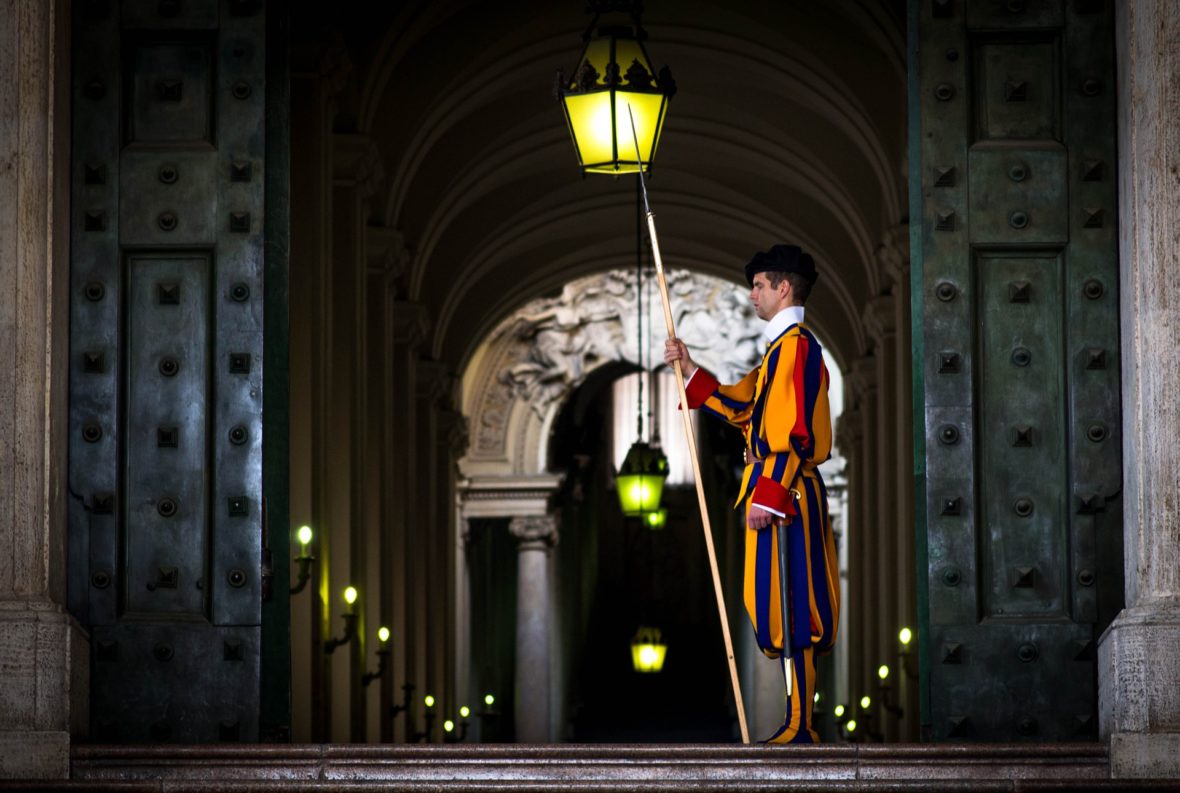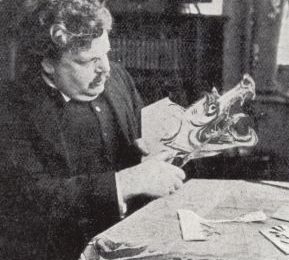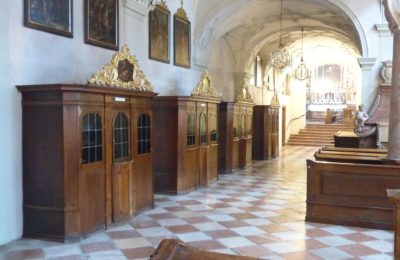“I have never been able to understand where people got the idea that democracy was in some way opposed to tradition. It is obvious that tradition is only democracy extended through time. It is trusting to a consensus of common human voices rather than to some isolated or arbitrary record. . . . Tradition means giving votes to the most obscure of all classes, our ancestors. It is the democracy of the dead. Tradition refuses to submit to the small and arrogant oligarchy of those who merely happen to be walking about. All democrats object to men being disqualified by the accident of birth; tradition objects to their being disqualified by the accident of death.” G.K. Chesterton, Orthodoxy
The picture (above) is that of a member of the Pontifical Swiss Guard at work at the doors of St. Peter’s Basilica in Rome. The Swiss Guard is essentially the army of the Vatican. This army has a long and rich history. The following contains more information on this longstanding papal army:
“The Pontifical Swiss Guard (also Papal Swiss Guard, or just Swiss Guard…) is a small force maintained by the Holy See that is responsible for the safety of the Pope, including the security of the Apostolic Palace. The Swiss Guard serves as the de facto military of Vatican City. Established in 1506 under Pope Julius II, the Pontifical Swiss Guard is among the oldest military units in continuous operation.
The dress uniform is of blue, red, orange and yellow with a distinctly Renaissance appearance. The modern guard has the role of bodyguard of the Pope. The Swiss Guard is equipped with traditional weapons, such as the halberd, as well as with modern firearms. Since the assassination attempt on Pope John Paul II in 1981, a much stronger emphasis has been placed on the guard’s non-ceremonial roles, and has seen enhanced training in unarmed combat and small arms.
Recruits to the guards must be unmarried Swiss Catholic males between 19 and 30 years of age who have completed basic training with the Swiss Armed Forces.” source
So, when in Rome, do look for the brightly dressed Vatican guards, and know that they are not simply Catholics dressed in costumes, living in the past. They are men who have assented to, and actively live in the traditions decreed by our ancestors; in particular, our ancestors who established the Swiss Guard.
This modern age tells us to throw out Tradition, which is why seeing these young men, willingly clad in the uniform designed by our ancestors, is terribly refreshing. That they are an all male, unmarried, Swiss only, and youthful crew, is equally thrilling as the parameters set in 1506 have been kept, regarding the make-up of the unit. People might think that as an American, living in a democratic country (actually a republic), I might oppose such non-egalitarian groups; but, as G.K. Chesterton pointed out (in the quote, above), democracy is not opposed to Tradition.
Another idea, along such lines, that G.K. Chesterton formulated, was that we should not tear down traditions just because they are traditions, which seemed to be the prevailing sentiment of the cultural revolution of the last several centuries. He expressed this by referring to the proverbial neighborhood fence dilemma: “Don’t ever take a fence down until you know the reason it was put up.”
This might be rephrased to state: do not tear down a tradition until you know why it was established.
Yes, Tradition is the democracy of the dead.
I like to think that our ancestors speak to us through the traditions they established, i.e., a gentleman holds a door for a lady: why?
Why did feminists of the last century oppose such a nicety?
More on that later.
Have a beautiful day!
•SCF






